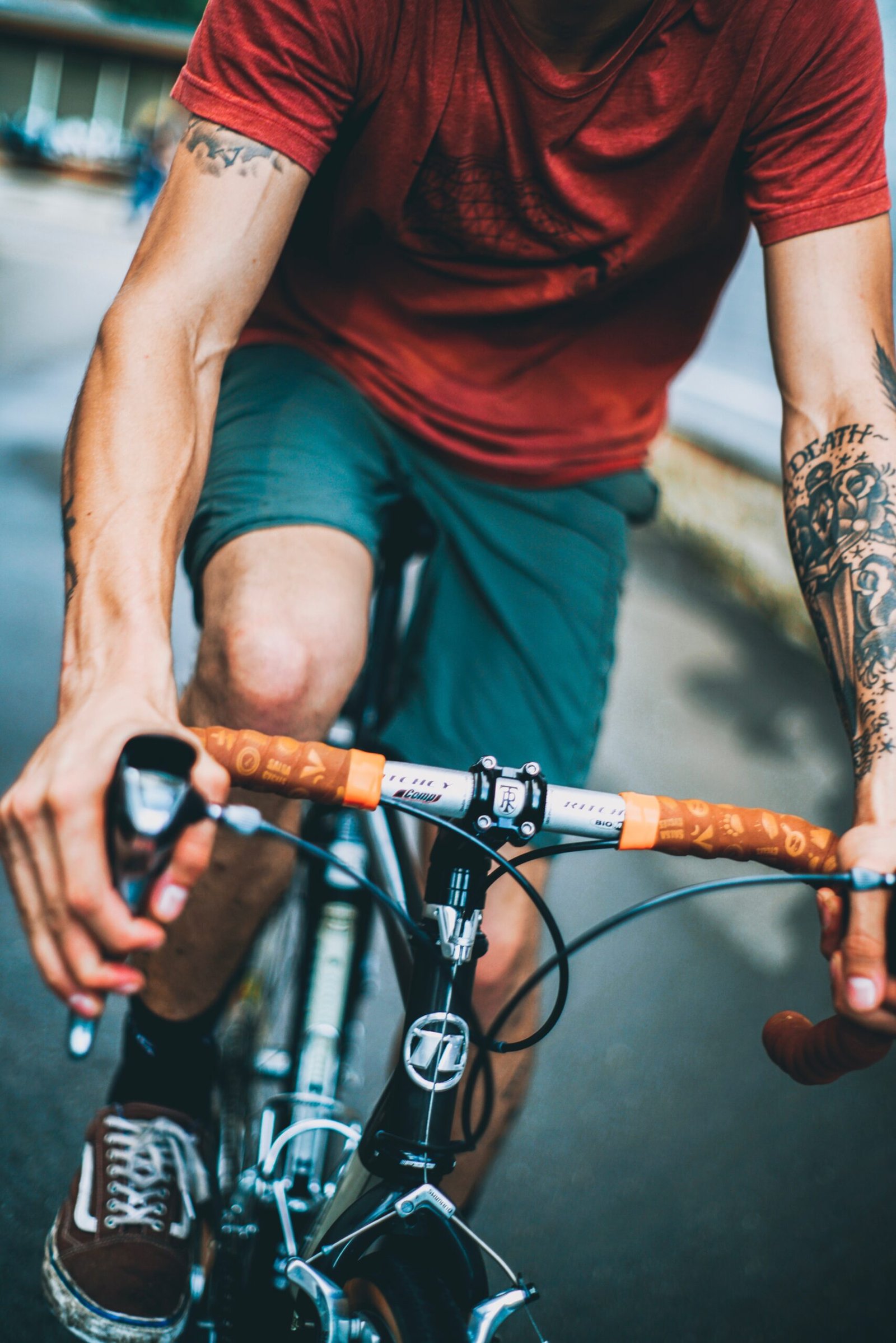
A few years ago, as I sat one morning with the cool fall breeze helping dry the fresh sweat off my legs from my morning workout, sipping my freshly made coffee… it stormed onto the porch with reckless abandon, nearly causing my to spill my coffee in excitement….
What was it that caused me to nearly spill my precious “liquid (edible) gold”?
The realization that the vast majority of cyclists don’t take the necessary time to prepare their bodies for their fall and winter strength training. This was the missing link for the riders who had contacted me with fresh lifting related injuries. Here’s what you need to know, but nobody ever tells you:
Your Tissues Aren’t Ready for Strength Training
Our beloved sport of cycling causes little to no challenges to be placed on the musculoskeletal system that challenge them to be able to handle the rigors of lifting moderate to heavy things. This has been shown time and again with studies which show that cyclists are at disproportionately higher risk of developing osteoporosis and/or suffering bone fractures due to crashes and trauma. Also true is that the muscles, while they’ve become oxygen-using jet engines to help propel you up the road or mountain, have not strengthened in a way that they can take the ruff and tumble beating that resistance training places on them.
But that second part is ignored completely, especially these last few years with so many well-meaning cyclists and triathletes jumping on the “LIFT HEAVY $H!T” bandwagon. (Why, hello there disc hernia/lower back pain/ other easily avoidable soft tissue injury!).
You’ve Spent Hundreds of Hours Hunched Over Your Handlebars
Let’s be honest here: The riding position isn’t the healthiest thing in the world.
It puts us to where out big ol’ 8 pound noggin is hanging off our upper bodies in ways that hurt our neck, shoulders, and even lower back.
While stretching and foam rolling may serve as small band-aids to help us FEEL better for a short time, they don’t help us undo the stress and strain we’ve placed on the muscles and joints. Think of foam rolling and stretching being the same as when the cities in the Northeast USA “cold patch” the potholes in March and April:
They make it drivable for a few days, and then the pothole is 3x, 5x, 10x bigger until they do a proper patching, or repaving.
Every Morning, You Feel Another Part of Your Body You Forgot Exists
Knees, feet, that weird muscle on the side of you back that just seized again on the way to make the coffee.: all of these aches and pains tend to be “accepted” in many cycling circles, as “part of the game”, but they shouldn’t be.
The of the our prime riding season leaves us with bodies that we’ve pushed to ride more hours/harder/ further than the last season…often without a check-in with our bike fitter to see if any adjustments need to be made. Your body is an incredible thing, it will adapt to pretty much whatever you keep doing/ telling it is important, and will only give you small to medium feedback (also called aches and pains) unless you have the mental power to blast through your limits.
(No, not like the Velominati “Rules”, but your actual physical limits)
These morning (and evening) pains are your bodies way of letting you know that the ship is sailable, but it’s got some issues, cap’n.
Listen to these smaller warning, and take the time to “unwind” your body from the most recent riding season, and you will not only feel better- mentally & physically- but you’ll also see much faster and steadier progress in your strength training program, once you begin.
Here’s What You Should Do
The following is simple, but not easy to do. Mostly, because if you’re like me, the fall weather means you’ll want to jump right in to riding more base miles. This is incredibly tempting and I’ve done this a few times in the past, only to regret it later. Instead, take 2-4 weeks to do a short and progressive movement session that helps you to undo the changes to your posture and open up the tight muscles.
Here are two samples of exercises that can do wonders for you for these 2-4 weeks of preparation, as a part of a program of 6-8 movements:
- Hip Flexor Release via Breath- This is a great 2nd or 3rd exercise for your program, as it uses good breathing patterns + a very specific position, to help you not only dynamically stretch the often tight quads and hip flexors, but also to become more aware of how your body is or isn’t able to work (quite yet)
- Active Preacher Stretch- Ahhh! This one hits ALL the right spots: Lats, hips, triceps, and more! But it takes paying attention to your positioning, breath, and how you’re moving. While technically a stretch as well, it is a dynamic stretch, which means we are gently trying to guide our body back to better posture and balance, not “stretch it till ya feel it!”
Give these two exercises a shot and see how they feel. 2 sets of each for 3 full breath cycles should be more than enough. If you don’t want to count breaths, simply set a timer for 30 seconds each. If you like these, head on over to the HVTraining YouTube channel to find a few other exercises you can add to your routine to help you out. Or, if you’d like to make your life super simple and follow a proven, pre-made program, check out the End of Season Unwind from my Stronger After 50 System.






